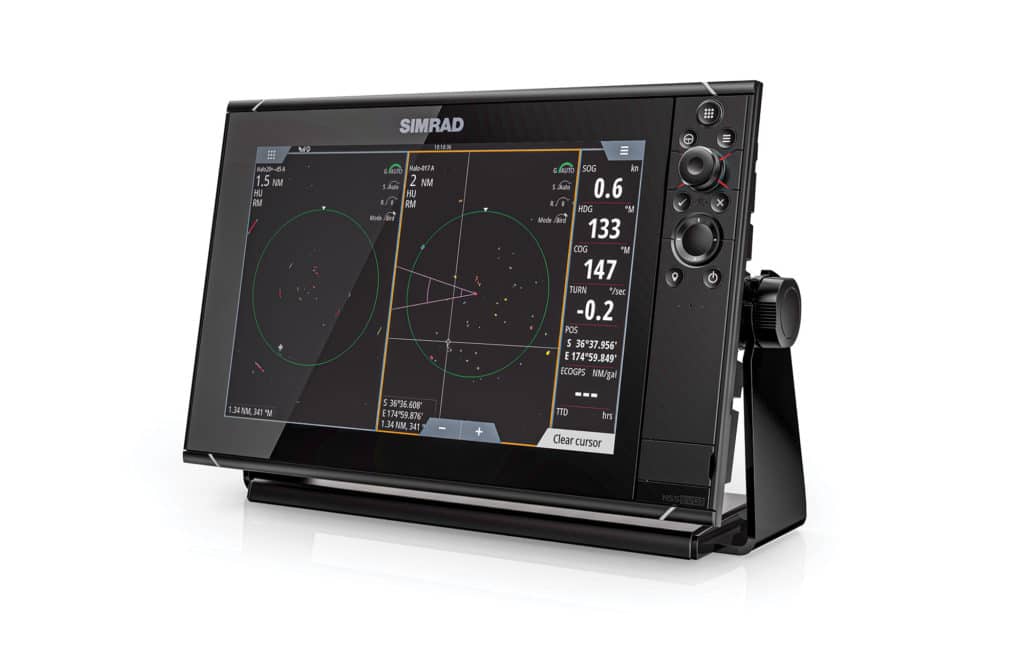
Glare from the late-autumn sun hampered visibility on Chesapeake Bay as Capt. Greg Shute searched for flocks of gannets and gulls feeding on schools of bunker pushed to the surface by rampaging striped bass.
He switched his Furuno radar to bird mode, and within minutes on the screen of his TZtouch2 display, he spotted a dense flock 2 miles out. He immediately throttled up and slid into nonstop action—a striper on every cast.
For years, anglers have used fairly large open-array radar systems to find flocks of birds. But Shute was using a Furuno DRS4D-NXT featuring a compact 24-inch-diameter dome that fits on virtually any fishing boat.
Amazingly, this is not even the smallest dome radar equipped with bird mode today. Other models featuring bird modes include the new Halo20+ (from Lowrance and Simrad) with a 20-inch dome, and Garmin’s GMR Fantom 18 with an 18-inch dome.
Mighty Mites
For context, radars with small dome scanners are hardly new. For example, Furuno introduced its ever-popular 1620 series radar with a 15-inch dome in the mid-1990s. Some domes are even smaller. The MDS-1 radar system from Si-Tex sports a dome that’s just 12.4 inches in diameter. However, by today’s standards, these systems are fairly basic. What makes the new breed of small dome radars so remarkable is the number of advanced features.
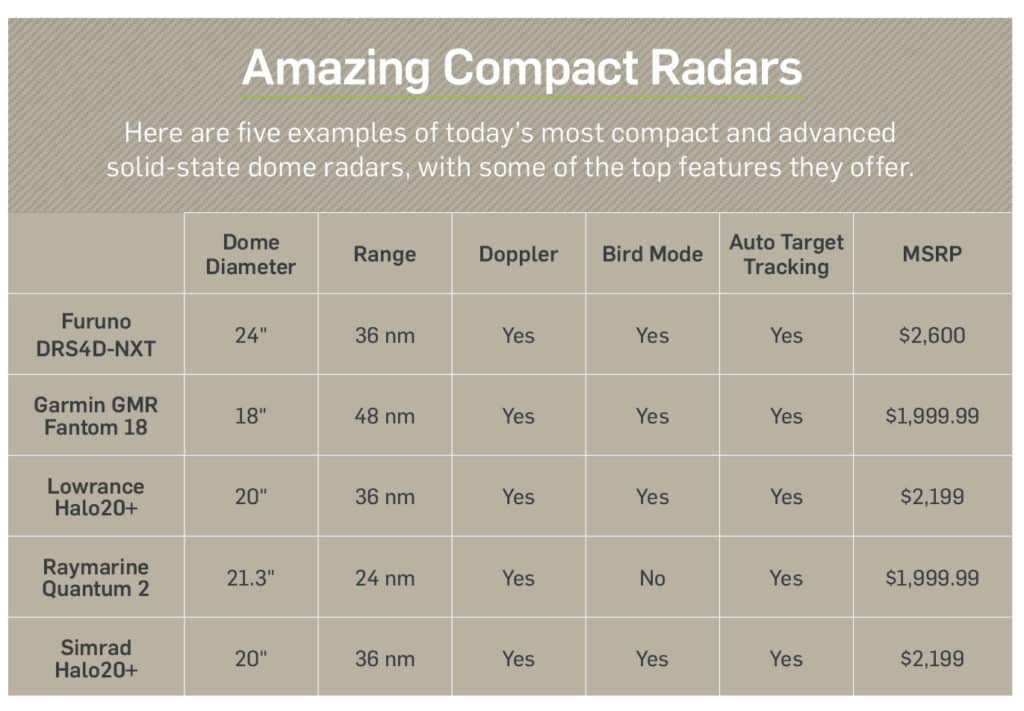
Depending on the system, it might include Doppler technology for identifying targets moving toward your position, automatic target tracking, dual-range functionality for simultaneously tracking targets both near and far, and special preset modes for navigating in heavy weather, negotiating harbors and finding birds.
Pulse Compression
Key to this trend is the advent of solid-state, pulse-compression technology versus using a traditional magnetron radar. Unlike a magnetron system, pulse compression transmits over a wide range of frequencies, then the radar processes the strength of the returning frequencies to accurately gauge the size and distance of targets, as well as the gaps in between. While a magnetron radar might display two objects as one target, pulse compression will show these as two distinct targets, so you navigate more safely.
What’s more, solid-state radars require no preheating and turn on almost instantly versus magnetron radars, which require a warmup period before use. Solid-state technology also facilitates smaller, lighter-weight scanners. This enables fishing boats as small as 20 feet to access the navigation and fishing features traditionally associated with larger open-array systems.
Doppler Safety
One of the most significant aspects in solid-state pulse-compression technology is the opportunity to incorporate Doppler capabilities. This feature automatically changes the target color, depending on the threat level of collision. On the Furuno DRS4D-NXT, for instance, anything stationary or moving away from the boat is green. Targets moving toward your position at 3 knots or more become red.
Shute uses this function to navigate safely in limited-visibility situations. That includes fishing around other boats that are trolling for striped bass while he practices his run-and-gun style of fishing.
VelocityTrack on the Halo20+, MotionScope on the Fantom 18, and Doppler on the Raymarine Quantum 2 operate in much the same way as the DRS4D-NXT. The Quantum 2 also includes a Safety Sector function that highlights and color-codes potentially dangerous stationary targets within 650 feet in front of the vessel, for additional safety.
Bird Brain
First, a caveat: While solid-state dome systems do find birds, magnetron systems with open arrays prove better at it. “We recommend that our customers consider an open-array magnetron radar, if finding birds is an important part of their regular fishing routine,” says Scott Heffernan, vice president of sales for the GPS Store, a North Carolina-based online electronics retailer. A magnetron-style open array acquires birds at distances of 4 to 5 miles.
That said, space for a radar scanner is often limited on the hardtop or T-top, especially on boats under 30 feet in length. That’s where using the bird mode function on the new breed of dome radars comes into play.
Based on testing in the Hauraki Gulf, on the east coast of New Zealand’s North Island, the new Halo20+ in bird mode detects flocks of diving gannets at 1½ miles, says Laurie Bates, radar product group owner for Navico (which includes the Lowrance and Simrad brands). “That’s about a mile beyond unaided visual range,” he points out.
Bird mode slows down the antenna rotation and changes the processing to concentrate on midrange targets, Bates explains. “To enhance the returns even further, you can tune down the sea clutter, turn on target trails and true motion, then switch the radar to north-up,” he adds. This not only shows bird flocks better, but it also paints target trails on them.
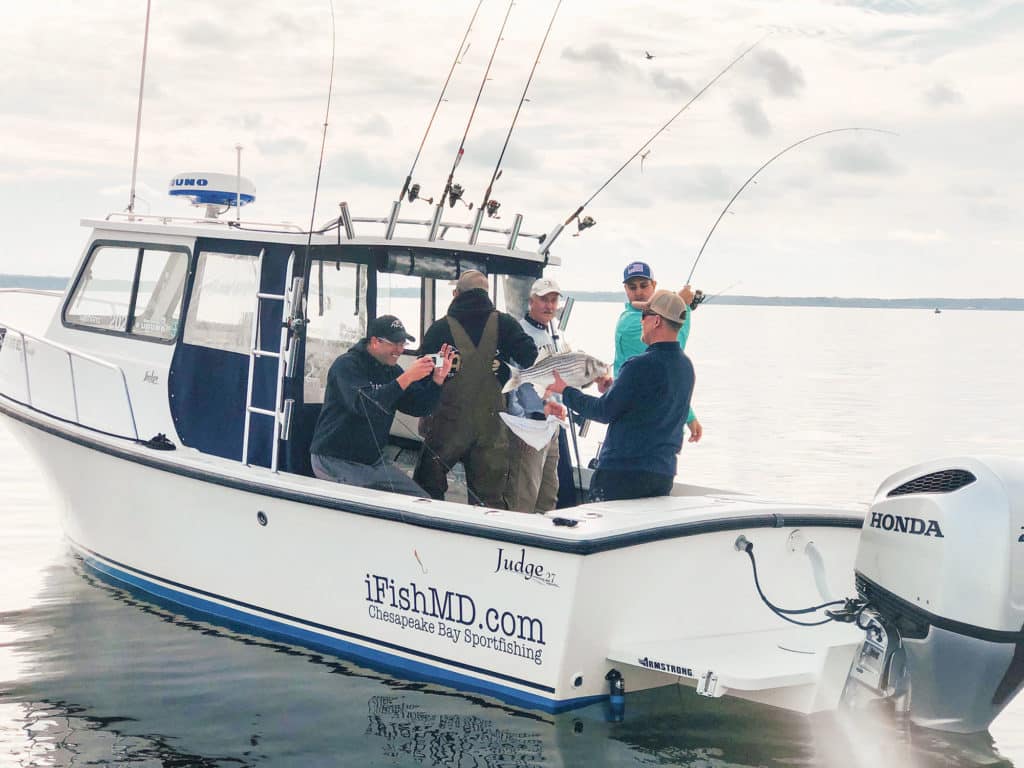
Shute gets a bit better range from his 24-inch Furuno dome radar. “The effective range for spotting birds with my Furuno DRS4D-NXT is about 2 miles,” he says.
Not only does Shute use bird mode to locate flocks of birds over migrating striped bass, he also counts on it to track them once his passengers hook up. “The bass are constantly moving,” Shute explains. “Bird mode helps me keep track of the fish, even when I’m not looking.”
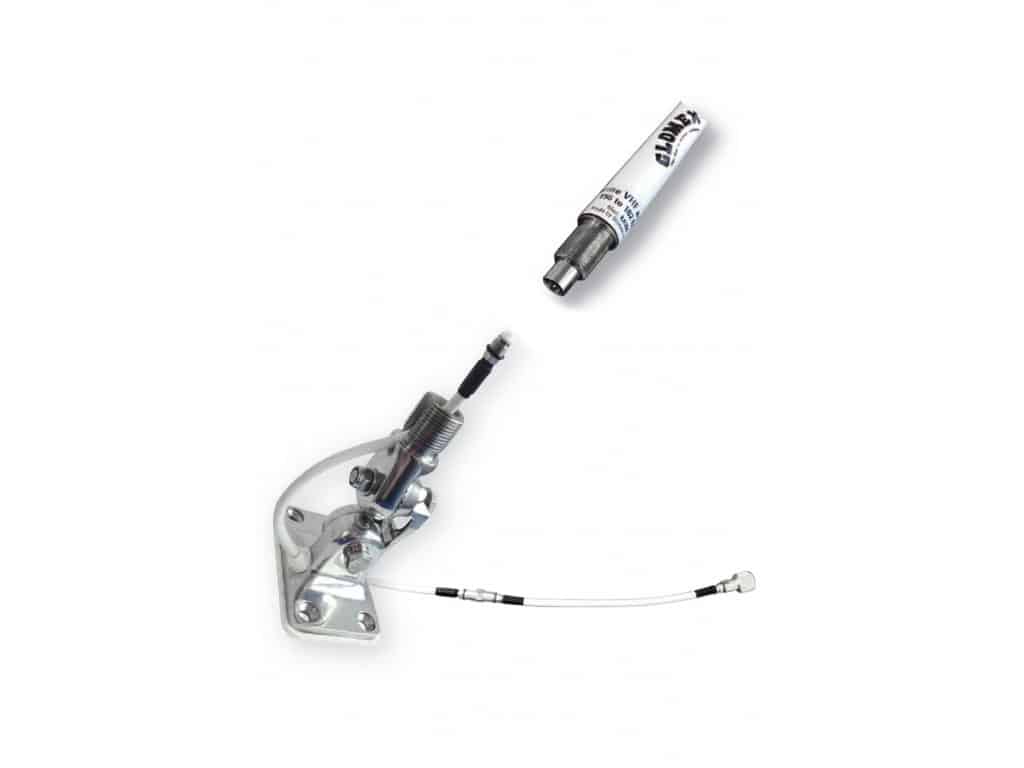
The Glomeasy line from Glomex makes it easy to install, remove and replace antennas for VHF and AIS. A pre-wired FME waterproof connector allows the RG-8X coax connection to rotate freely, so there’s no twisting or shearing. It offers less signal attenuation than standard RG-58C/U cable for greater transmission and reception. Glomex antennas feature glossy white finishes that resist yellowing. Antennas start at $88; glomex.us
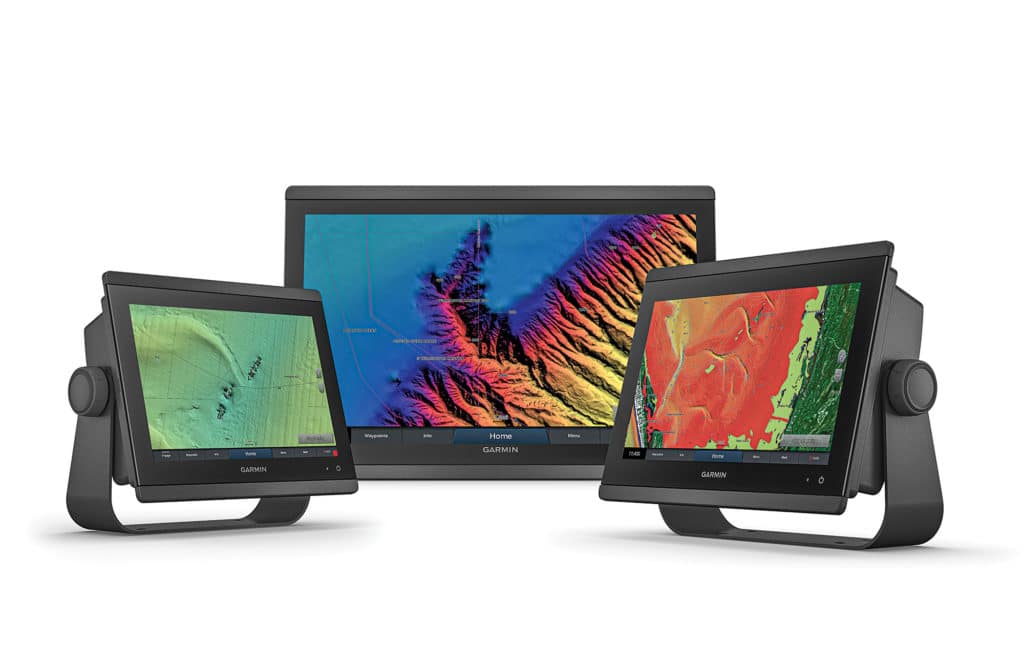
Garmin’s high-resolution relief shading in its BlueChart g3 Vision cartography is now available for the entire continental United States coastline. This feature combines color and shadow to paint the ocean floor in vivid detail. It is available in accessory cards and downloads. Existing customers with Blue Chart g3 Vision cards can use Garmin’s New Chart Guarantee to update charts. From $249.99 to $449.99; garmin.com/maps
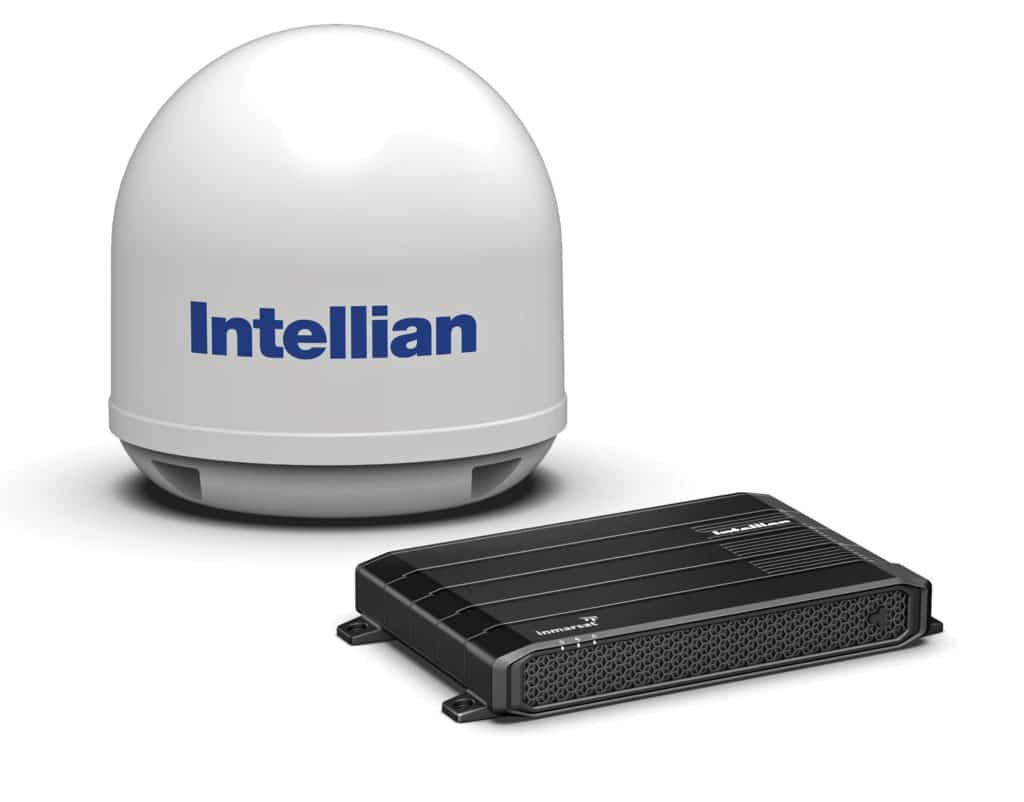
Intellian’s Inmarsat Fleet One and FleetBroadband 250 satellite communications systems provide high-quality digital voice and SMS texting. Wi-Fi access points allow mobile devices to connect. Fleet One offers simple installation. The terminal also offers features related to safety at sea, including Inmarsat 505 Emergency Calling, the free voice distress safety service for small vessels. $6,900 (Fleet One), $9950 (FB 250); intelliantech.com









